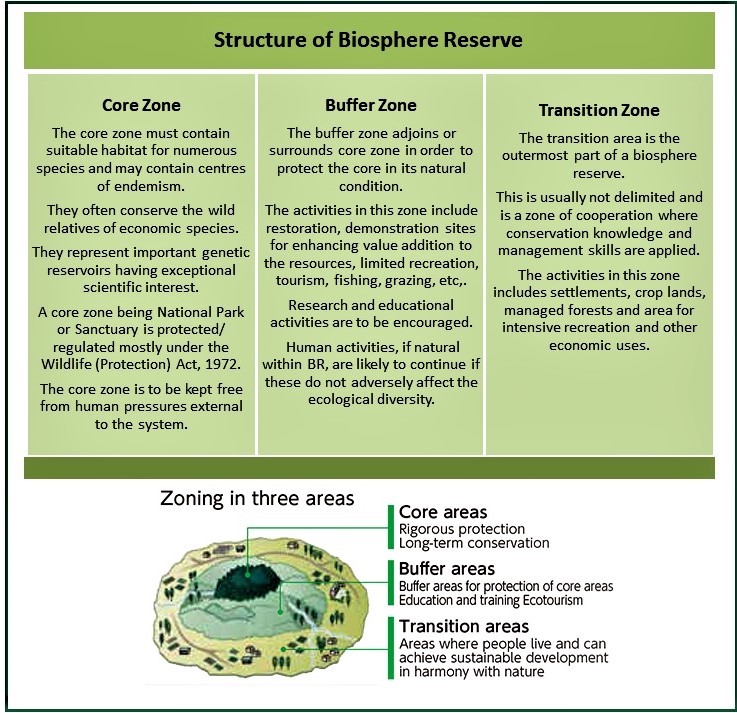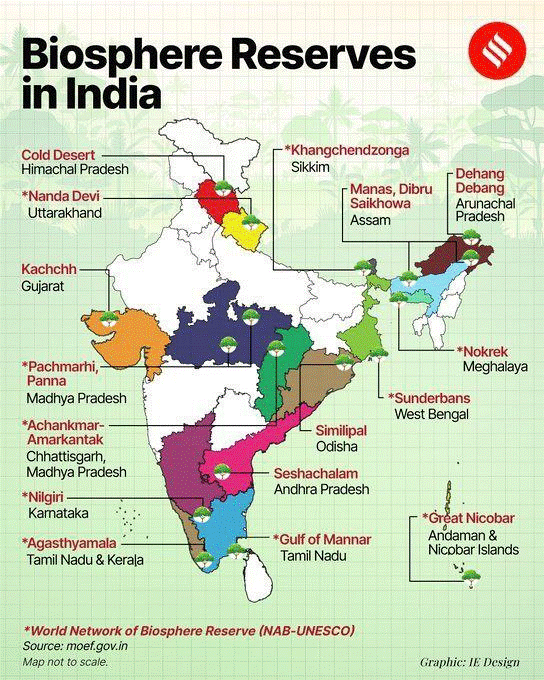900 319 0030
enquiry@shankarias.in
It is important to reflect on the progress made in conserving and sustainably using the biosphere reserves.
World Biosphere Reserve Day is celebrated on November 3 to raise awareness on the importance of biosphere reserves and to promote their conservation and sustainable use.

According to UNESCO, there are currently 748 biosphere reserves across 134 countries, including 22 transboundary sites.

|
South and Central Asian Biosphere Reserve Network Meeting (SACAM) |
|
References